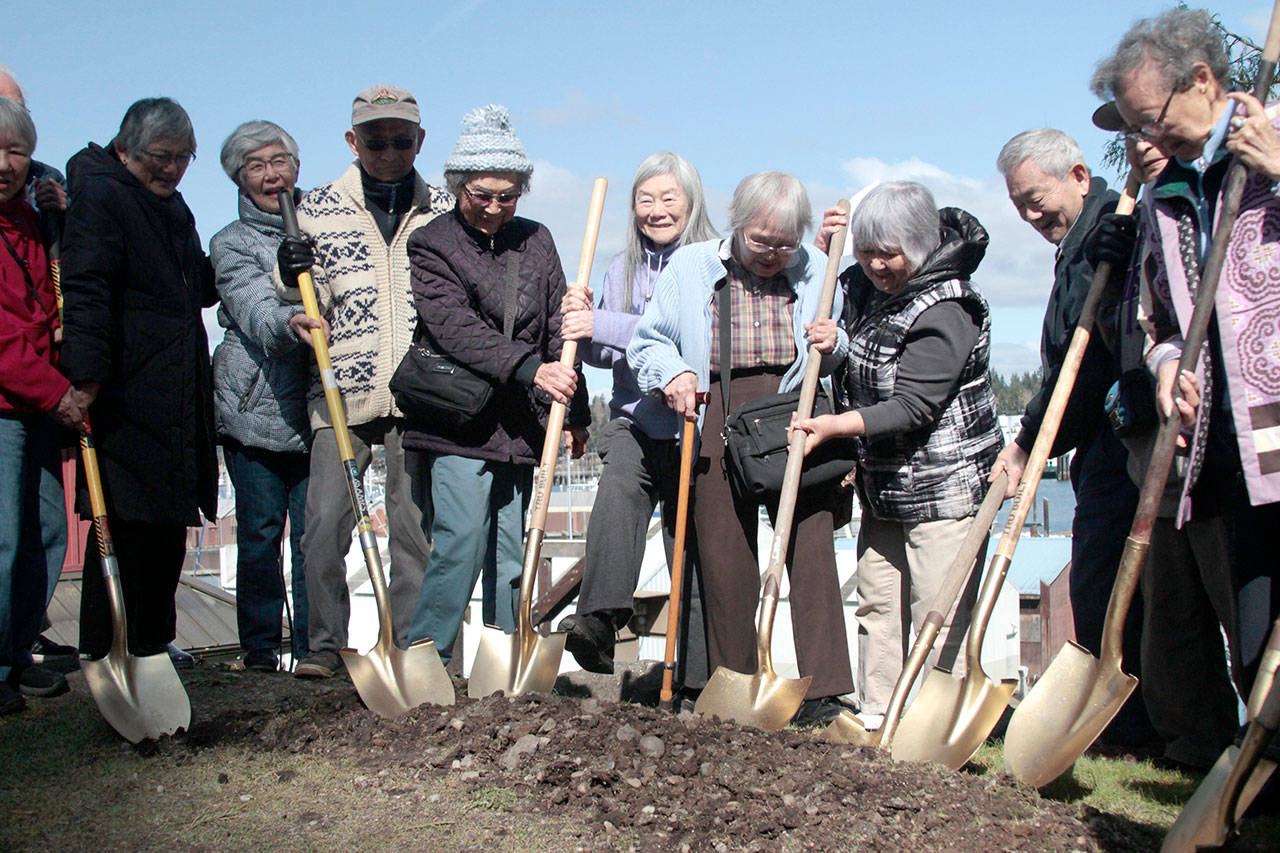The Bainbridge Island Japanese American Exclusion Memorial lines the actual path walked by Bainbridge residents of Japanese descent on March 30, 1942, during their forced removal from their homes in the wake of the attack on Pearl Harbor.
Waiting for them at the end was the old Eagledale Ferry Dock, and moored there the ferry Kehloken, set to take them to they knew not where, nor for how long.
Ultimately, more than 200 men, women and children — more than two–thirds of them American citizens — were forcibly removed from their homes, rounded up by Army soldiers armed with rifles, and forced to board the ferry to Seattle. From there, they were taken to government camps where they lived as prisoners.
These islanders were among the first of nearly 120,000 other people of Japanese ancestry exiled from the region, the result of Executive Order 9066 issued by President Franklin D. Roosevelt on Feb. 19, 1942 in the wake of post-Pearl Harbor hysteria.
Today, due to the hard work and diligence of many, these events are a core component of Bainbridge’s cultural identity, and an elegant monument marks the site of this shameful, seminal occurrence.
Soon, visitors to that historic site will be able to better imagine the mindset of the evacuees as they culminate their walk along the memorial with a short venture out onto the water on a portion of rebuilt Eagledale Ferry Dock, allowing them a tentative, uncertain look back at the Bainbridge shoreline, what those taken away thought their last view of home might be on that fateful day many years ago.
The groundbreaking of the so-called Exclusion Departure Deck, set to be completed in August, was the culmination of the 76th anniversary commemoration ceremony of the forced exclusion Monday, March 30.
“We’re here to commemorate that, but we’re also here to commemorate this incredible community,” Clarence Moriwaki, president of the Bainbridge Island Japanese American Community, told the gathered crowd Friday.
“The leadership of the Woodwards, and this community that looked after their friends and neighbors. It set Bainbridge apart. It’s important for everyone to remember that there were people that were that kind … all up and down the West Coast, from Canada to Arizona, but they were the exception in those communities, to care about their Japanese American friends and neighbors. On Bainbridge Island that was the norm, and I think that’s something we should celebrate.”
Special guests and speakers at the commemoration included Ken DeWitt, commissioner, Bainbridge Island Metropolitan Park & Recreation District; Joan Walters, president, Bainbridge Island Historical Museum; state Senator Christine Rolfes; Acting Deputy Regional Director Tom Leatherman of the National Park Service; and Darlene Kordonowy, president of the Bainbridge Island Japanese American Exclusion Memorial Association.
In the audience were numerous internment survivors and their friends and relatives, as well.
The addition to the memorial was more than just a nicety, Kordonowy said. It would prove invaluable in further connecting young people and visitors to the experience of those removed.
“By the end of the summer, you’ll be able to come and visit and see as you walk down this long walkway, where the people left the island 76 years ago, you’ll be able to see what it was like to start to leave the island, not knowing if they were ever going to come back,” Kordonowy said as the conceptual drawings of the Exclusion Departure Deck were unveiled. “We think it’s an important element of the experience and look forward to sharing it with the community and with all the visitors.”
Internment survivors were the ones to do the actual groundbreaking. Special golden shovels in hand, they dug, to the sound of resounding applause, thus marking the official start of the new feature’s construction.
Rolfes, a former Bainbridge city council member during the time that the original plan for the memorial was first being developed, shared a look back at its path from concept to construction.
What is today the site of the Bainbridge Island Japanese American Exclusion Memorial, she said, was once just one of 60 road ends.
“These are places where the road literally ends,” she said. “Always at a former public boat launch or ferry dock.”
Abandoned for about 50 years, in the 1990s, after the city of Bainbridge Island incorporated, the site was chosen by the volunteers of the city’s Road End Committee for preservation.
“Road End Number 23, Taylor Avenue, where we now stand, was the list recommended for preservation and public access,” Rolfes said Friday. “So in the spring of 2001, the city received a modest grant of $17,000 from the state Department of Ecology to improve Taylor Avenue Road End Number 23.”
The grant paperwork, Rolfes said, even back then, specifically cited the spot’s historical significance as important and recommended it as a candidate to be made a national historic landmark.
Ultimately, the site was cleaned up and a plaque, which is still there today, was placed. Very quickly, though, those involved decided that was insufficient recognition.
“Shortly after that grant was received, 9-11 happened, and with it, the threat of religious, cultural and racial intolerance that felt similar to that which had swept the nation in the 1940s,” Rolfes said.
“On Bainbridge Island, where the history of the Japanese American internment has deep and lasting roots, instead the concept of Nidoto Nai Yoni [“Let It Not Happen Again”] swept the community, and plans for the memorial were greatly expanded.”
In the next few months, as construction advances on the latest addition to the memorial, further expanding the visitor experience and keeping history alive for those living in once again tumultuous political times, it remains a moral message as timely as ever.



